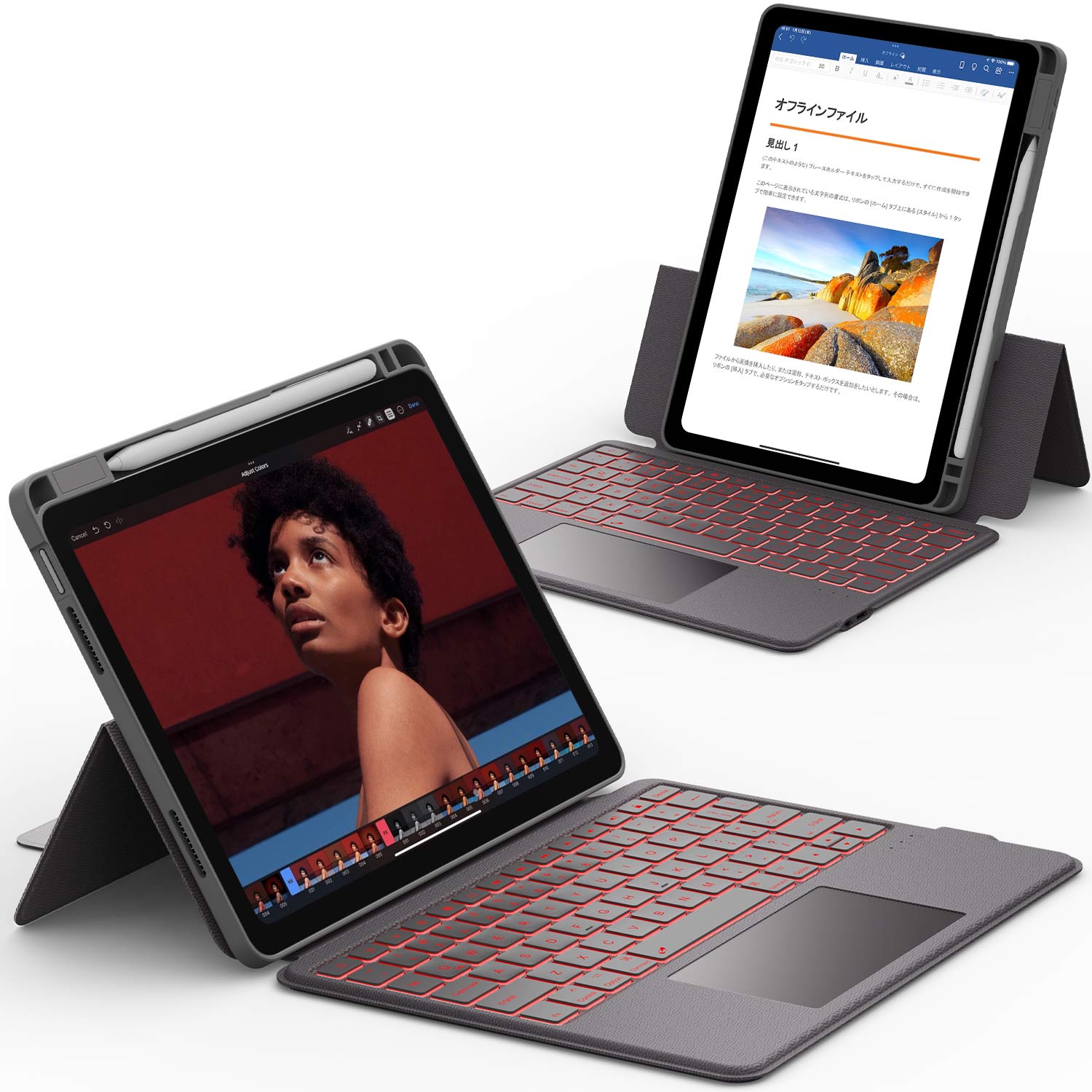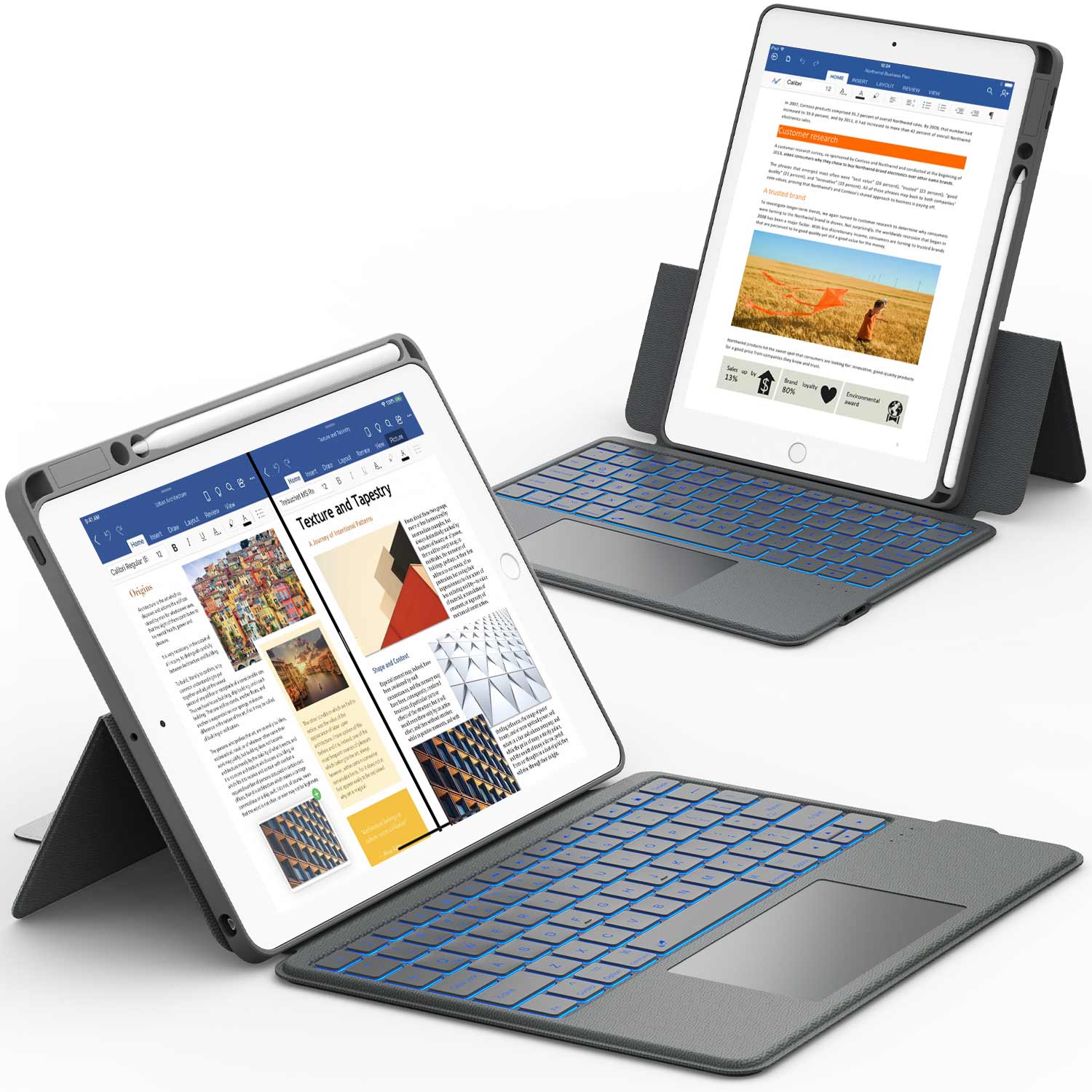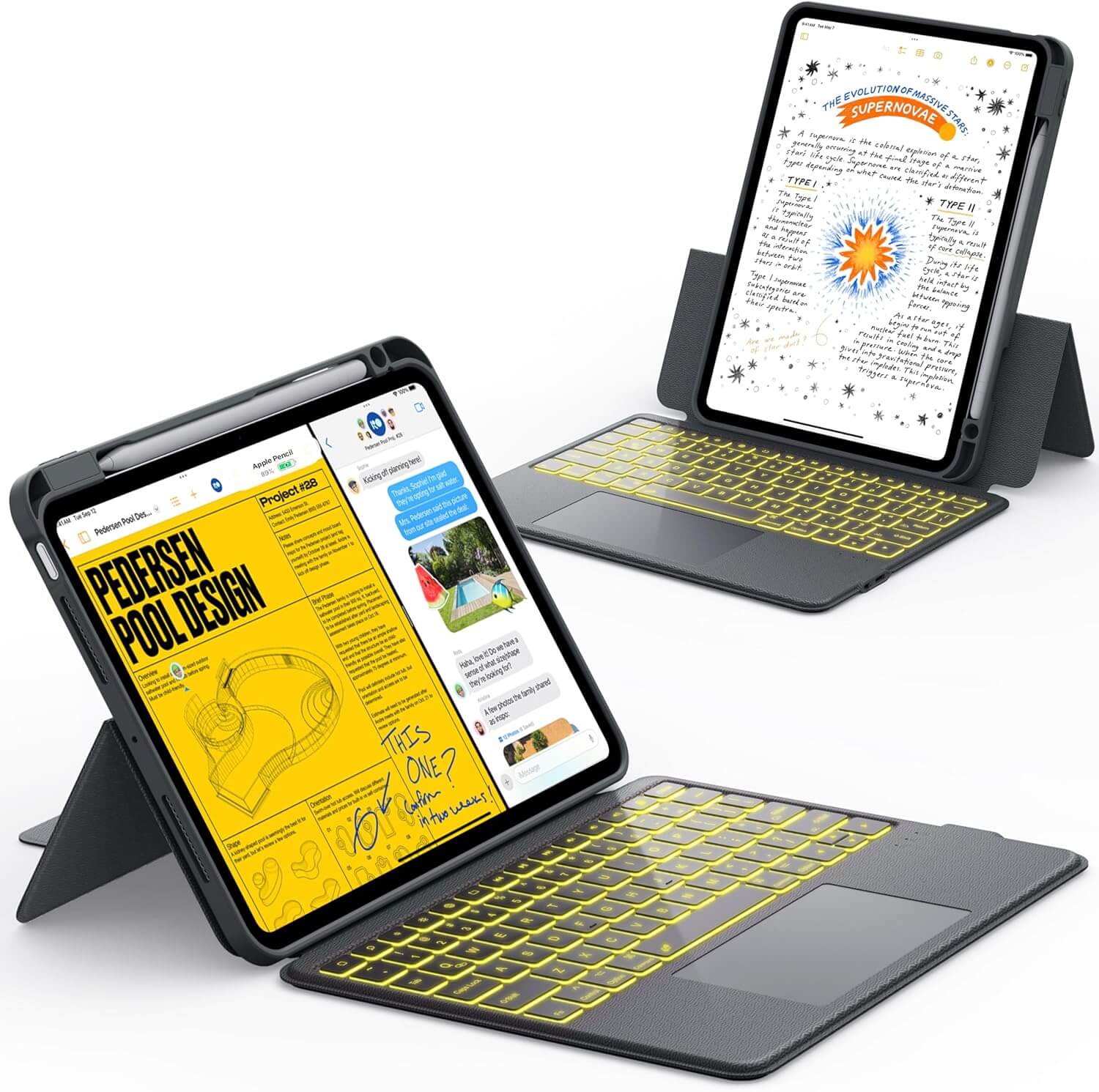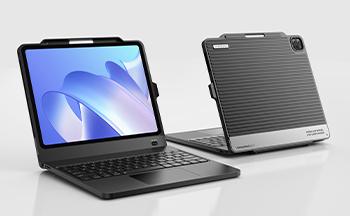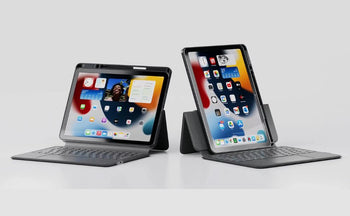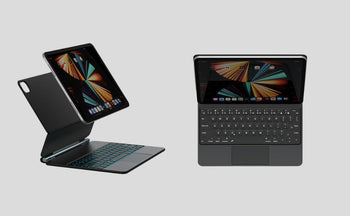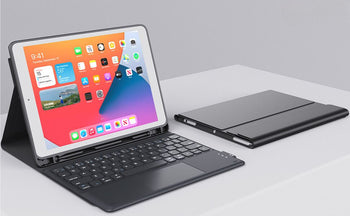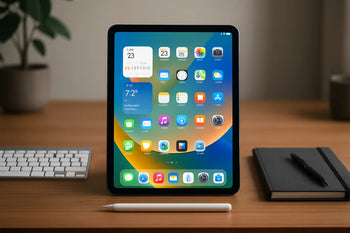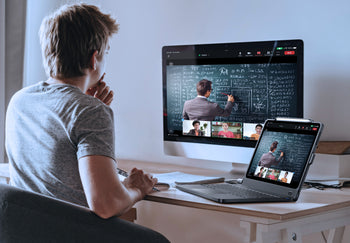Picking the best writing tablet can really help you jot down notes, sketch, or just keep your ideas in order—without losing that familiar pen-on-paper sensation. If you want something light, simple, and good for handwriting, you’ll find plenty of solid choices like reMarkable, Onyx, and Kindle.
The best writing tablet fits your workflow, feels smooth to write on, and keeps your notes safe and easy to find.
You don’t have to lug around stacks of notebooks or worry about messy pages anymore. With a good tablet, you can write, erase, and save everything digitally.
These gadgets are built to help you focus, whether you’re a student, a busy professional, or someone who just likes to scribble ideas.
Most writing tablets use E Ink screens, which are easy on your eyes and work well even outside in the sun. Some models come with pens that feel surprisingly close to the real thing, letting you mark up documents or sketch with accuracy.
Finding the one that fits depends on your must-haves—maybe it’s battery life, a bigger screen, or handy extras like syncing to the cloud.
What Is a Writing Tablet?

A writing tablet is a device built for taking notes, drawing, or writing, just like you would with a pen and paper. You use a stylus to write naturally, and the tablet saves your work digitally.
They’re designed to keep things simple, focusing on writing instead of loading up on features you might not want.
Writing Tablet Definition vs Stylus Tablet
A writing tablet is mainly for writing, drawing, and note-taking. Its screen often feels like paper, and the whole point is to give you a smooth, distraction-free writing experience.
Brands like reMarkable and Onyx Boox focus on handwriting and simplicity. On the other hand, a stylus tablet is any tablet that works with a pen but usually does a lot more—think apps, streaming, or games.
iPads, Galaxy Tabs, and Surface tablets all fall into that group. They’re versatile, but you might not get that true paper feel.
If you mostly want to write, a dedicated writing tablet keeps things uncluttered. But if you want flexibility, a stylus tablet gives you options. It’s really about what you need most.
Who Needs a Writing Tablet and Why
If you take handwritten notes all the time—in class, meetings, or just brainstorming—a writing tablet might be for you. Students like them because you get the best of both worlds: handwriting and digital organization.
Writers and professionals also appreciate writing tablets, since the paper-like display is easier on the eyes than a regular screen. Long writing sessions don’t feel as tiring.
If you want something that feels like paper but keeps your notes safe and organized, these tablets are a great fit. You won’t have to carry a bunch of notebooks, and many models back up your notes to the cloud so you don’t lose anything.
Top Features of the Best Writing Tablet

When you’re picking a writing tablet, you’ll want smooth pen input, a screen that works for you, a device that’s easy to carry, and software that keeps your notes tidy. Each feature matters, whether you’re sketching, typing, or just jotting a quick thought.
Pen Responsiveness & Pressure Sensing
The pen should feel natural—no annoying lag or jerkiness. That’s key for handwriting or drawing.
Devices like the Apple Pencil and Surface Slim Pen let you control line thickness with pressure, which makes your notes or art look more lively. Tilt support is another plus, especially if you like shading or broad strokes.
Some pens even buzz a little to mimic paper. Honestly, the way the pen feels against the screen can make or break the experience.
E‑Ink vs LCD Screen Pros and Cons
E-Ink screens look and feel like paper. They’re easy on your eyes and sip battery, so you can write for hours without strain.
The downside? E-Ink is usually slower and mostly black-and-white, so not ideal for colorful sketches. LCD screens, on the other hand, are bright and quick, perfect for mixing in apps or media.
They use more power and can tire your eyes faster, though. If you mostly read and write, E-Ink is probably the way to go. For color and versatility, LCD wins.
Size, Weight, Battery Life
You want something light enough to carry but big enough to write on comfortably. Most popular tablets are between 10 and 13 inches.
Smaller ones slip into a bag easily, but larger screens give you more space. E-Ink tablets can last weeks, while LCDs usually need daily charging.
If you’re away from outlets all day, long battery life is a must. For classes or meetings, aim for something that goes at least a full day.
Note‑Taking Software & File Export
Good software makes it easy to write, organize, and find your notes. Look for apps that recognize handwriting and let you search quickly.
Being able to export to PDF, PNG, or Word is handy for sharing. Some tablets sync with cloud services like OneDrive or iCloud, so you can grab your notes anywhere.
Extra features like layering, converting handwriting to text, or adding images can help you personalize your notes. Built-in collaboration tools are a nice bonus for group work.
The Best Writing Tablets Compared
If writing is your main thing, you’ll want to look at screen type, pen feel, app support, and whether or not you want distractions. Some tablets are laser-focused on writing, while others let you do more.
1. reMarkable 2 – Top Distraction‑Free Pick

The reMarkable 2 is all about writing and note-taking. Its e-ink display feels a lot like paper and is easy on your eyes.
You won’t get apps or notifications, so distractions stay out of your way. The stylus barely lags and supports pressure, so your writing feels smooth.
It’s thin and light, and syncing files to your computer or phone is straightforward. If you want a digital notebook without the clutter, this one’s for you.
2. reMarkable Paper Pro – Advanced Pen Feel

The Paper Pro builds on the reMarkable 2 with a better pen response and a textured screen that’s even closer to real paper. The pen feels grippy, which makes writing and drawing more precise.
You get more pressure sensitivity and tilt support, which artists and heavy note-takers will like. It still keeps things distraction-free, and the battery lasts a long time.
If you’re after the most realistic paper feel in a digital device, the Paper Pro stands out.
3. Boox/Kindle Scribe – E‑Ink with Flexibility

Boox and Kindle Scribe mix e-ink screens with more flexibility than pure writing tablets. Both let you write and read, but you can also use some third-party apps or load up your own documents.
Boox runs Android, so you can install apps like Word or PDF viewers. Kindle Scribe is more about note-taking and reading Amazon e-books, with a big 10.2-inch screen.
The stylus works well on both, but Boox gives you more customization. If you want a quiet, eye-friendly screen with some app freedom, these are a nice middle ground.
4. iPad Pro + Apple Pencil – Color and Apps

The iPad Pro with Apple Pencil gives you a ton of power for writing, drawing, and more. The retina display is bright and colorful, and the Apple Pencil is precise with tilt and pressure support.
You can use tons of note-taking and writing apps, like Notability or GoodNotes. Multitasking is simple, but you’ll need to manage distractions and battery life.
If you want a writing tablet that doubles as a creative powerhouse, this combo is tough to beat.
Looking for extra comfort while writing? Check out The Best iPad Case for Writing With Apple Pencil to find the perfect ipad case for your setup.
5. Samsung Galaxy Tab S10 Ultra – Android Stylus Tablet

Samsung’s Galaxy Tab S10 Ultra comes with the S Pen and a large, vivid AMOLED screen. The S Pen is quick and offers features like air gestures and shortcuts.
You can use different writing apps, edit docs, and multitask. It’s a bit heavier, but it’s powerful and the battery holds up well.
If you want Android’s flexibility with a sharp screen and stylus, the Tab S10 Ultra is a strong pick.
Need a tablet that’s great for both writing and school? Read Best iPad for College to pick the right one for your studies.
E‑Ink vs LCD Writing Tablets

Picking between E-Ink and LCD writing tablets really comes down to comfort, speed, and whether you care about color or refresh rates. Both types have clear strengths—depends what you want most.
Eye Comfort
E-Ink tablets are way easier on your eyes for long writing sessions. They use reflected light, so it feels like paper and cuts down on eye strain.
No screen glare or blue light to worry about, which is great if you’re outside or studying for hours. LCD tablets use backlighting, which can get tiring after a while, especially in dim light.
But LCDs can adjust brightness, which helps if you work in different lighting.
Lag
Lag is the delay between your pen moving and the line showing up. Most E-Ink tablets have a bit more lag because their screens refresh slower.
This can feel a little off if you write quickly. LCD tablets refresh faster, so writing feels smoother and more immediate.
If you need speed, LCD might be better. Still, newer E-Ink models are catching up with faster response times.
Color vs Refresh Rate
E-Ink tablets mostly show black, white, and gray. That keeps battery life long and the reading experience paper-like.
If you’re just writing or reading, color probably doesn’t matter. LCD tablets give you full color, which is handy for highlighting or sketching.
They do use more power, though, and usually have shorter battery life. LCD screens also refresh faster, which is nice for video or animation, but they drain the battery quicker.
Should You Add a Keyboard Case?

Adding a keyboard case to your writing tablet really changes how you work. Typing gets easier, and suddenly your tablet feels a lot more like a laptop.
There are tons of keyboard cases out there for different tablets. Each one has its quirks, features, and price points, so you’re likely to find something that fits your needs.
Benefits: Easier Typing, Laptop-Like Setup
Physical keyboards help you type faster and more comfortably than tapping on glass. The layout cuts down on mistakes, and your speed improves almost without you noticing.
Most keyboard cases include a stand, so your tablet sits upright like a tiny laptop screen. This setup works great for long writing sessions or even the occasional video call.
You’ll usually connect these cases via Bluetooth or a magnetic connector. Some, like Apple’s Magic Keyboard, have a clicky trackpad, making navigation feel almost like a real laptop.
Of course, keyboard cases add some weight and bulk. If you write a lot, though, that trade-off might be totally worth it.
Samsung Galaxy Tab: Chesona Cloud Series
Got a Samsung Galaxy Tab? The CHESONA Cloud Series keyboard case is a sleek and functional upgrade. Its magnetic floating stand lets your tablet effortlessly hover above the keyboard for a true laptop-like experience.
The keyboard features a 7-color LED backlight with three brightness levels, so you can type comfortably in any lighting conditions.
An integrated high-definition LED display shows battery, Caps Lock, charging, and Bluetooth status at a glance.
The responsive multi-touch trackpad supports smooth navigation and gesture control.
This case also includes a built-in stylus (S Pen) holder for added convenience.
For Galaxy Tab users seeking a blend of style, smart features, and ergonomic design, this one delivers.
iPad 10th Gen: Chesona Steps Touch
For iPad 10th Gen, the Chesona Steps Touch keyboard case stands out without costing much. You get a 7-color backlit keyboard, so typing in the dark isn’t a struggle.
The multi-touch trackpad supports gestures like scrolling and swiping. Dual Bluetooth pairing lets you flip between your iPad and phone, which is honestly pretty handy.
There’s a pencil holder, so your Apple Pencil stays close by. It’s a budget-friendly choice that still feels like an upgrade.
iPad Pro/Air: Rugged Detachable Backlit Cases with Adjustable Stand and Magnetic Attachment
If you’ve got an iPad Pro or Air and want something tougher, Chesona’s Rugged keyboard cases could be a good fit. They come with backlit keys, so you can type in any light.
Both cases have a sturdy, detachable design. You can pop the keyboard off when you don’t need it, and the magnetic attachment makes setup a breeze.
The adjustable stand lets you pick your favorite viewing angle. These cases add some heft, but they’ll help protect your iPad from drops or bumps while giving you a mini laptop vibe.
If you travel a lot or write on the go, the extra protection and flexibility might be worth it.
Final Thoughts
Your search for the best writing tablet just got easier. Whether you go for a cozy e‑ink screen or a do-it-all color tablet, you’ll gain a sleek digital tool that keeps notes tidy and ideas flowing. Think about what matters most: writing feel, battery life, screen type, or attachable keyboards.
Match your choice to your budget—from simple models under $300 to premium tablets above $600. With the right tablet, you’ll say goodbye to paper clutter and hello to smooth, organized writing.
Want to make writing on your tablet even easier? Explore How to Maximize Functionality with iPad Keyboard Cases for tips on boosting your productivity.
Frequently Asked Questions
Which tablet is better for writing?
If you want something light and easy to carry, a tablet beats a laptop for writing, hands down. The reMarkable or Onyx Boox are favorites because they feel like paper and don’t bombard you with distractions.
But if you need to run heavy programs or juggle lots of tasks, a laptop might suit you better.
Many tablets support attachable or Bluetooth keyboards, which makes typing a lot more pleasant. Bigger screens help too—there’s just more room to see your work.
What tablets do writers use?
Writers often choose tablets that help them focus and organize notes easily. The reMarkable tablet is loved for its paper feel and simple writing apps.
Onyx Boox tablets are popular too, since they pack in more features and handle lots of file types. Kindle Scribe is another pick if you want to read, annotate, and write here and there.
Most writers prefer tablets with stylus support. Handwriting notes can spark creativity, so look for low-latency stylus input to keep things smooth and natural.
What is the best drawing tablet that feels like paper?
The best drawing tablets that feel like paper use textured screens and cut down on glare. reMarkable 2 is a standout—it’s got a matte screen that mimics paper’s feel and resistance.
Other solid options include the Onyx Boox Note Air and some Wacom models with textured screen protectors. These make your pen glide less and feel more like real drawing.
If you want to draw and write, pick a tablet with pressure sensitivity and tilt recognition on the stylus. The extra control really helps.
Which device is best for writers?
For pure writing, you want something simple and distraction-free. Devices like the reMarkable 2 really shine here, with their fast note-taking and those paper-like screens that just feel good.
If you’re after a mix—maybe some reading, writing, and a bit of web browsing—a more powerful tablet might be your thing. The iPad with Apple Pencil or the Samsung Galaxy Tab S series both offer a ton of app options and flexibility.
A good keyboard makes a world of difference. Some tablets throw in keyboard covers, while others pair up nicely with Bluetooth ones. Pick one that fits your typing style, especially if you write for hours.
Don’t forget about battery life. Tablets that can go a full day or longer are just better when you’re writing on the move.
